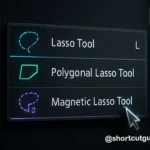Express Yourself with Emoji Translations
Transform your words into expressive emoji combinations instantly. Perfect for social media, messaging, and making your content more engaging.
😀 Try Our Free Emoji Translator 🎉
Your Emoji Translation
Why Choose Our Emoji Translator
Perfect for Social Media
Make your posts stand out with expressive emoji combinations that increase engagement and visibility.
WordPress Integration
Coming soon as a plugin to integrate directly with your WordPress site and editor.
Growing Emoji Library
We constantly add new emoji combinations to keep your content fresh and up-to-date.
Emojis have become a universal language. A single 😂 or ❤️ can convey emotions better than a full sentence. But what happens when messages are packed with emojis, and you’re unsure what they mean? That’s where an emoji translator comes in.
Having worked in digital marketing and content strategy for over 10 years, I’ve seen firsthand how emojis can boost engagement—but only if your audience understands them. An emoji translator helps decode or convert text into emojis, bridging the gap between creativity and clarity. In this guide, we’ll explore how emoji translators work, their benefits, practical use cases, and tools to make your communication more expressive.
What Is an Emoji Translate?
An emoji translating tool that converts words, phrases, or even full sentences into emojis—or interprets emojis into readable text. Think of it as a bridge between traditional text and the modern emoji language.
For example:
- Text: “I love pizza and movies tonight”
- Emoji Translation: “❤️🍕🎬🌙”
Emoji translators use mapping algorithms, databases of emojis, and sometimes AI-powered pattern recognition to match text to appropriate emoji symbols.
How Does an Emoji Translating Work?
At a technical level, emoji translators scan your input and match keywords or concepts to corresponding emoji characters.
Here’s a simplified process:
- Text Parsing – The translator identifies nouns, verbs, and emotions in your sentence.
- Emoji Mapping – Each key word is mapped to a relevant emoji from a pre-defined collection.
- Conversion Output – The tool outputs a combination of emojis that represents your original text.
Some advanced emoji translators also work in reverse, helping you decode messages full of emojis back into readable text.
Why Use an Emoji Translate?
Emojis are fun, but using them effectively requires strategy. Here’s why you should consider an emoji translate:
- Boost Engagement – Posts with emojis typically see higher likes, shares, and comments.
- Quick Communication – Convey complex emotions or concepts in a few symbols.
- Accessibility – Understand emoji-heavy messages in chats or social media.
- Content Creativity – Create catchy, emoji-filled captions for marketing campaigns.
- Language Barrier Solution – Emojis are universal, so translators help audiences understand across languages.
Types of Emoji Translate
There are several ways to translate text into emojis, depending on your needs:
1. Online Emoji Translators
Websites where you paste text, click “Translate,” and get a string of emojis. Quick and easy for casual users.
2. Mobile Apps
Apps on iOS and Android that integrate with messaging platforms, allowing emoji translation directly within chats.
3. Social Media Tools
Some social media managers use emoji translation features to auto-generate emoji-filled captions for posts.
4. Custom API Translators
For businesses, APIs can automatically convert product descriptions, promotions, or notifications into emoji-rich text.
How to Use This Tool Effectively
Knowing how to use an emoji translator makes the difference between fun communication and confusing spam:
- Stay Relevant – Don’t replace every word with an emoji. Keep it readable.
- Limit the Number – Use 3–6 emojis per sentence to enhance clarity.
- Match Tone – Emojis should reflect the mood of your text. A sad message needs 😢, not 😂.
- Test Across Platforms – Emojis render differently on iOS, Android, and Windows.
Real-World Use Cases for Emoji Translators
Over the years, I’ve seen emoji translators applied in creative and strategic ways:
- Social Media Marketing – Brands create emoji-filled campaigns that are fun, relatable, and shareable.
- Text Messaging Apps – Users send concise messages like “🍕❤️🎬” instead of full sentences.
- Email Marketing – Emojis in subject lines can increase open rates.
- Learning & Accessibility – Helps people learn the meaning of emojis or read emoji-heavy text.
Top Tools for Emoji Translation
Here are some reliable emoji translators you can try today:
- EmojiTranslate.com – Simple online translator for text to emoji.
- GetEmoji.com – Copy and paste emojis easily into messages or posts.
- Slack & Discord Custom Translators – Add emojis automatically in your messages.
- Mobile Keyboard Translators – Apps like Bitmoji or Gboard support emoji suggestions while typing.
Pro Tip: Always preview your translation. Some emojis may not perfectly match your intended tone.
Conclusion: Why an Emoji Translator Is Worth Using
An emoji translator isn’t just a gimmick—it’s a practical tool for communication in the digital age. It helps you express emotions, clarify messages, and even engage audiences creatively.
Whether you’re a casual messenger, social media manager, or digital marketer, incorporating emoji translators into your workflow can save time, boost engagement, and make your messages more relatable.
So next time you’re sending a message, posting a caption, or crafting marketing copy, let emojis speak for you—efficiently, clearly, and creatively.
FAQs on Emoji Translators
1. Can emoji translators convert long texts?
Yes, many tools can handle paragraphs, but readability might decrease with excessive emojis. It’s best to summarize or use shorter sentences.
2. Do all platforms display emojis the same way?
No. iOS, Android, and Windows often render emojis differently, so test translations across devices.
3. Are emoji translators free to use?
Most online tools and apps are free for basic use, though some advanced or branded emoji translators may have paid versions.









